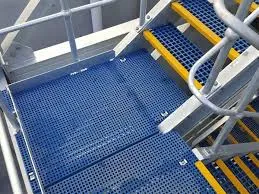
-
 Afrikaans
Afrikaans -
 Albanian
Albanian -
 Amharic
Amharic -
 Arabic
Arabic -
 Armenian
Armenian -
 Azerbaijani
Azerbaijani -
 Basque
Basque -
 Belarusian
Belarusian -
 Bengali
Bengali -
 Bosnian
Bosnian -
 Bulgarian
Bulgarian -
 Catalan
Catalan -
 Cebuano
Cebuano -
 China
China -
 China (Taiwan)
China (Taiwan) -
 Corsican
Corsican -
 Croatian
Croatian -
 Czech
Czech -
 Danish
Danish -
 Dutch
Dutch -
 English
English -
 Esperanto
Esperanto -
 Estonian
Estonian -
 Finnish
Finnish -
 French
French -
 Frisian
Frisian -
 Galician
Galician -
 Georgian
Georgian -
 German
German -
 Greek
Greek -
 Gujarati
Gujarati -
 Haitian Creole
Haitian Creole -
 hausa
hausa -
 hawaiian
hawaiian -
 Hebrew
Hebrew -
 Hindi
Hindi -
 Miao
Miao -
 Hungarian
Hungarian -
 Icelandic
Icelandic -
 igbo
igbo -
 Indonesian
Indonesian -
 irish
irish -
 Italian
Italian -
 Japanese
Japanese -
 Javanese
Javanese -
 Kannada
Kannada -
 kazakh
kazakh -
 Khmer
Khmer -
 Rwandese
Rwandese -
 Korean
Korean -
 Kurdish
Kurdish -
 Kyrgyz
Kyrgyz -
 Lao
Lao -
 Latin
Latin -
 Latvian
Latvian -
 Lithuanian
Lithuanian -
 Luxembourgish
Luxembourgish -
 Macedonian
Macedonian -
 Malgashi
Malgashi -
 Malay
Malay -
 Malayalam
Malayalam -
 Maltese
Maltese -
 Maori
Maori -
 Marathi
Marathi -
 Mongolian
Mongolian -
 Myanmar
Myanmar -
 Nepali
Nepali -
 Norwegian
Norwegian -
 Norwegian
Norwegian -
 Occitan
Occitan -
 Pashto
Pashto -
 Persian
Persian -
 Polish
Polish -
 Portuguese
Portuguese -
 Punjabi
Punjabi -
 Romanian
Romanian -
 Russian
Russian -
 Samoan
Samoan -
 Scottish Gaelic
Scottish Gaelic -
 Serbian
Serbian -
 Sesotho
Sesotho -
 Shona
Shona -
 Sindhi
Sindhi -
 Sinhala
Sinhala -
 Slovak
Slovak -
 Slovenian
Slovenian -
 Somali
Somali -
 Spanish
Spanish -
 Sundanese
Sundanese -
 Swahili
Swahili -
 Swedish
Swedish -
 Tagalog
Tagalog -
 Tajik
Tajik -
 Tamil
Tamil -
 Tatar
Tatar -
 Telugu
Telugu -
 Thai
Thai -
 Turkish
Turkish -
 Turkmen
Turkmen -
 Ukrainian
Ukrainian -
 Urdu
Urdu -
 Uighur
Uighur -
 Uzbek
Uzbek -
 Vietnamese
Vietnamese -
 Welsh
Welsh -
 Bantu
Bantu -
 Yiddish
Yiddish -
 Yoruba
Yoruba -
 Zulu
Zulu
Revolutionizing Car Aesthetics with Advanced FRP Hoods for Enhanced Performance
Exploring the Significance of FRP Hoods in Modern Applications
Fiber Reinforced Polymer (FRP) hoods are emerging as pivotal components across various industries due to their lightweight, durable, and versatile nature. As technology evolves and the demand for better-performing materials increases, FRP hoods are becoming more prevalent in applications ranging from automotive to aerospace, and even in construction. This article delves into the significance of FRP hoods, their advantages, and the future prospects that come with their adoption.
FRP is a composite material made of a polymer matrix enhanced with fibers, typically glass, carbon, or aramid. This combination provides exceptional strength-to-weight ratios, making FRP hoods significantly lighter than traditional metal hoods. This lightweight characteristic results in improved fuel efficiency in vehicles and enhanced performance in aircraft, where weight reduction is crucial. For instance, in the automotive sector, manufacturers are increasingly turning to FRP hoods to contribute to overall weight savings, thereby improving gas mileage while ensuring safety and compliance with regulatory standards.
.
The flexibility of design offered by FRP hoods is also noteworthy. Manufacturers can easily mold these materials into complex shapes that meet specific aerodynamic requirements or aesthetic preferences. Customization is a significant advantage, allowing companies to produce unique designs that align with branding or performance specifications. This adaptability can be seen in the sports automotive market, where sleek and efficient designs are paramount for attracting consumers and maximizing performance.
frp hood

Furthermore, the production process of FRP hoods also combines efficiency with sustainability. Unlike traditional metalworking, which can be energy-intensive, the manufacturing of FRP products can be optimized to reduce waste and energy consumption. As industries gravitate towards environmental sustainability, incorporating FRP materials aligns with global efforts to reduce carbon footprints and promote recycling.
However, despite the numerous advantages, the adoption of FRP hoods is not without challenges. Cost remains a significant factor, as the upfront expense of FRP materials can be higher than traditional metals. This can deter manufacturers, especially smaller companies or those with limited budgets. Additionally, the recycling of FRP materials has yet to be fully addressed, which raises concerns about their long-term environmental impact.
Looking to the future, ongoing research and advancements in FRP technology promise to mitigate some of these concerns. Initiatives to develop more cost-effective manufacturing processes and enhance the recyclability of FRP materials are underway. As scientists and engineers work to innovate, the potential for FRP hoods to become the industry standard in various sectors continues to grow.
In conclusion, the significance of FRP hoods in contemporary applications cannot be overstated. Their lightweight nature, resistance to corrosion, design flexibility, and potential for sustainable manufacturing make them an attractive option for numerous industries. While challenges remain, the future of FRP hoods looks promising, paving the way for advancements that could redefine material use in automotive, aerospace, and beyond. Industry stakeholders must embrace this transformative trend, ensuring that innovation and sustainability go hand in hand as we progress into a new era of material technology.
Latest news
-
Exploring the Benefits of Top Hammer Drifter Rods for Enhanced Drilling PerformanceNewsJun.10,2025
-
High-Precision Fiberglass Winding Machine for GRP/FRP Pipe Production – Reliable & Efficient SolutionsNewsJun.10,2025
-
FRP Pipes & Fittings for Shipbuilding - Corrosion-Resistant & LightweightNewsJun.09,2025
-
Premium FRP Flooring Solutions Durable & Slip-ResistantNewsJun.09,2025
-
Premium Fiberglass Rectangular Tanks Durable & Lightweight SolutionNewsJun.09,2025
-
Tapered Drill String Design Guide Durable Performance & UsesNewsJun.09,2025









